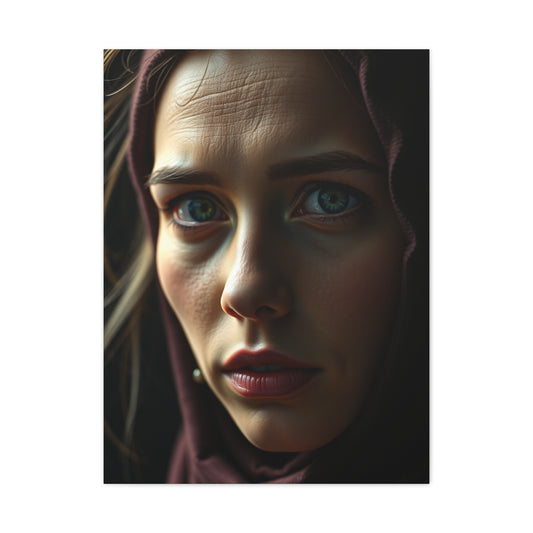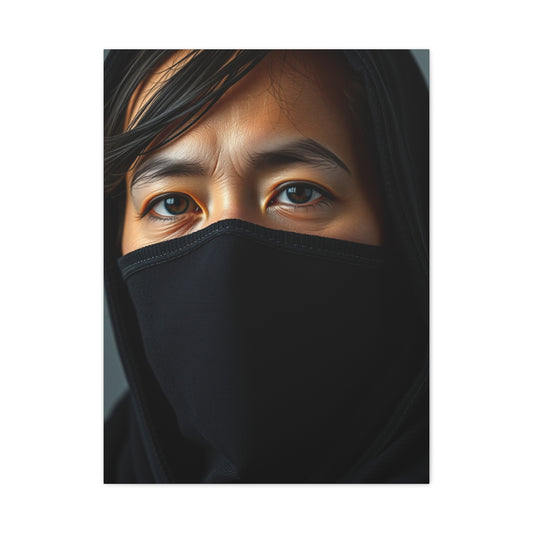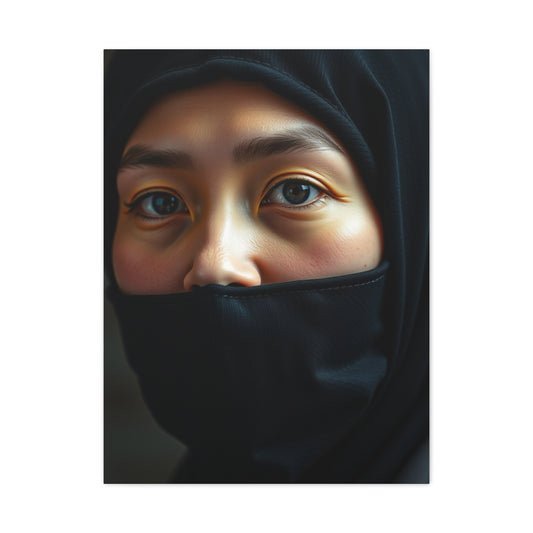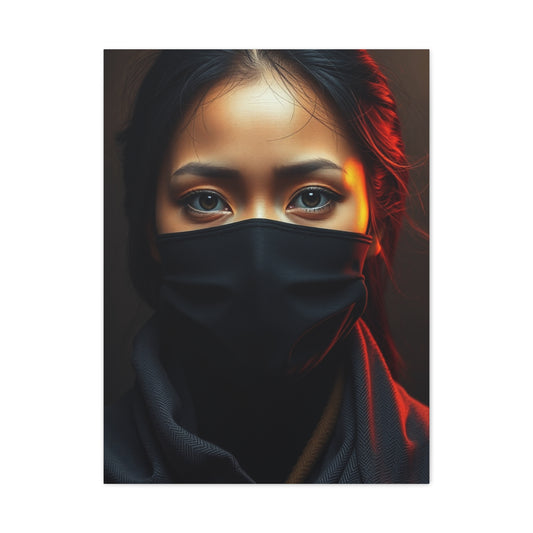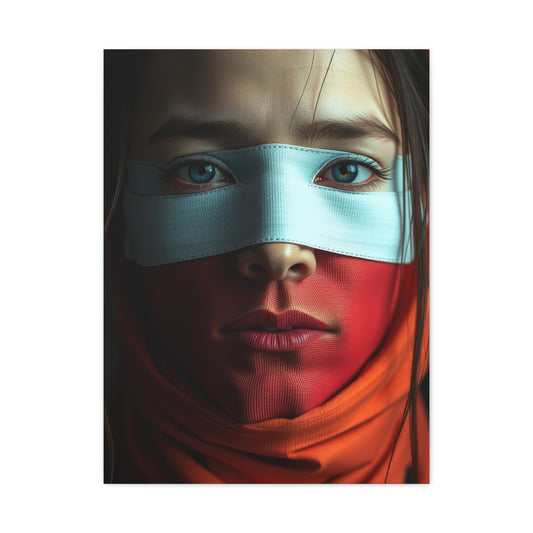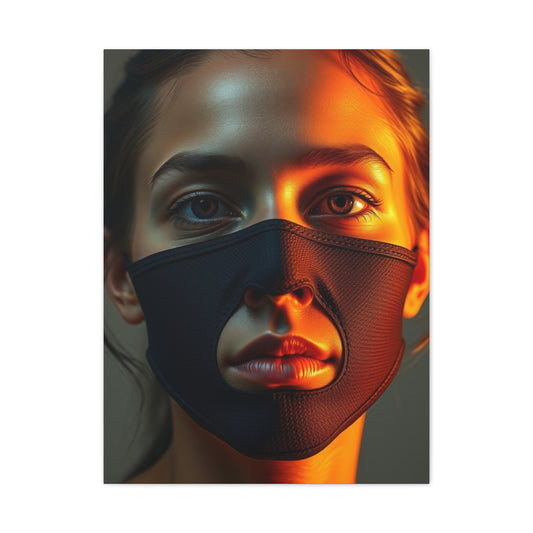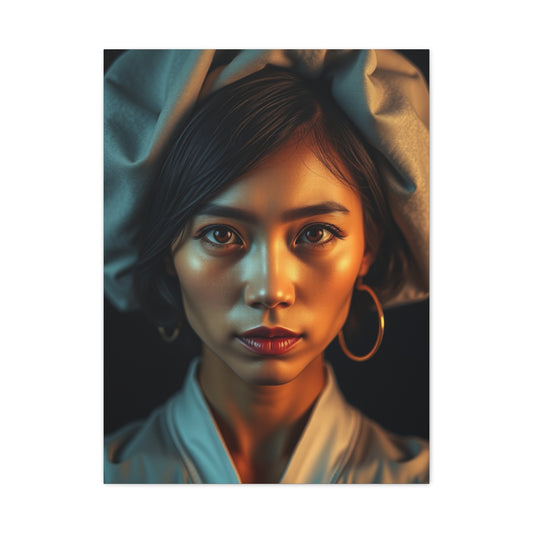The Enigmatic World of Faceless Portraits Wall Art: A Journey Through Anonymous Expression
Picture standing before a canvas where human forms emerge without the defining characteristics of conventional portraiture. Where eyes, nose, and mouth traditionally reside, there exists instead a purposeful void that speaks volumes. These mysterious artistic creations, known as faceless portraits wall art, represent one of the most compelling and thought-provoking movements in contemporary visual expression. They challenge our fundamental understanding of identity, emotion, and human connection while creating spaces of profound contemplation within our living environments.
The Renaissance of Anonymous Artistic Expression
Contemporary artists have embraced the concept of identity-absent portraiture with remarkable fervor, transforming blank canvases into profound statements about humanity's collective experience. This artistic movement transcends traditional boundaries, creating pieces that resonate deeply with viewers who encounter these mysterious figures adorning gallery walls and intimate home spaces.
The phenomenon extends beyond mere aesthetic choice, representing a deliberate philosophical stance regarding the nature of individuality and universal human experience. Artists working within this realm deliberately obscure facial features to create works that speak to broader themes of anonymity, universality, and the essence of human existence beyond superficial characteristics.
Modern practitioners of this art form utilize various methods to achieve their vision. Some painters employ smooth, flesh-toned surfaces where faces should appear, while others incorporate abstract geometric shapes, shadows, or symbolic elements. The diversity of approaches within faceless portraits wall art demonstrates the rich possibilities inherent in this deceptively simple concept.
Tracing the Lineage of Anonymous Representation
The roots of faceless artistic expression stretch deep into art history, drawing inspiration from numerous cultural traditions and philosophical movements. Ancient sculptures often depicted figures with stylized or minimal facial features, prioritizing symbolic representation over individualistic detail. Medieval art frequently portrayed anonymous saints and biblical figures whose identities were conveyed through attributes rather than distinctive facial characteristics.
Renaissance masters occasionally employed techniques that obscured or minimized facial features to emphasize other aspects of human experience. Giorgio de Chirico's metaphysical paintings featured mannequin-like figures with egg-shaped heads, pioneering a modernist approach to faceless representation that continues to influence contemporary artists creating faceless portraits wall art.
The surrealist movement embraced anonymous figures as symbols of the unconscious mind and collective human experience. Salvador Dalí, René Magritte, and other prominent surrealists incorporated faceless or obscured figures into their works, establishing precedents that modern artists continue to explore and expand upon in their own creative endeavors.
Contemporary Masters of Anonymous Portraiture
Today's artists working within the realm of faceless portraits wall art bring diverse perspectives and methodologies to this compelling art form. Some focus on silhouette-based compositions that emphasize body language and gesture as primary means of emotional communication. Others create highly detailed paintings where every element except the face receives meticulous attention, creating powerful contrasts that draw viewers into contemplative states.
Minimalist practitioners strip away all but the most essential elements, creating clean, geometric representations of human forms that speak to universal experiences of love, loss, joy, and contemplation. These artists often work with limited color palettes, emphasizing the emotional impact of their compositions through careful attention to proportion, composition, and spatial relationships.
Mixed-media artists incorporate various materials and techniques to create textured, multi-dimensional works that invite tactile as well as visual engagement. They might combine traditional painting methods with collage elements, fabric, or sculptural components to create faceless portraits wall art that transcends conventional categorization while maintaining the essential mystery of anonymous representation.
The Symbolic Language of Absent Features
The deliberate omission of facial features in portraiture creates a unique symbolic vocabulary that communicates meaning through absence rather than presence. This artistic choice transforms viewers into active participants in the creative process, encouraging them to project their own experiences and emotions onto the anonymous figures before them.
Psychological research suggests that humans naturally seek to find faces in abstract patterns and forms, a phenomenon known as pareidolia. Faceless portraits wall art plays with this innate tendency, creating tension between expectation and reality that generates powerful emotional responses and prolonged contemplative engagement with the artwork.
The absence of specific facial features allows these artworks to transcend individual identity and speak to universal human experiences. Viewers from diverse backgrounds and cultures can relate to these anonymous figures, finding reflections of their own struggles, hopes, and dreams within the purposeful blankness where faces traditionally appear.
Color Psychology in Anonymous Portraiture
Artists creating faceless portraits wall art demonstrate remarkable sophistication in their use of color to convey emotion and meaning without relying on facial expressions. Warm earth tones might suggest comfort, security, and connection to natural elements, while cooler blues and greys evoke contemplation, solitude, and introspective states.
Bold, saturated colors can imbue anonymous figures with energy and vitality, suggesting passion, creativity, and dynamic emotional states despite the absence of visible expressions. Conversely, muted or monochromatic palettes might emphasize themes of mystery, elegance, and timeless beauty that transcend specific cultural or temporal contexts.
The strategic use of color gradients and transitions within faceless portraits wall art creates visual movement and emotional flow that guides viewers through carefully orchestrated experiences. Artists might employ contrasting colors to create visual tension or harmonious palettes to evoke feelings of peace and unity.
Composition and Spatial Relationships
The arrangement of elements within faceless portraits wall art requires extraordinary attention to composition and spatial relationships, as artists cannot rely on facial expressions to establish emotional connections with viewers. Body language, posture, and gesture become primary vehicles for communication, demanding sophisticated understanding of human anatomy and movement.
Negative space plays a crucial role in these compositions, with the absence of facial features creating powerful focal points that draw and hold viewer attention. Artists must carefully balance positive and negative elements to create visually compelling works that maintain engagement despite their mysterious nature.
The relationship between figure and background becomes particularly significant in faceless portraits wall art, as environmental elements often carry additional symbolic weight. Some artists place their anonymous figures against stark, minimalist backgrounds that emphasize isolation and introspection, while others create rich, detailed environments that suggest narrative context and emotional depth.
Cultural Interpretations and Global Perspectives
Different cultures bring unique perspectives to the interpretation of faceless portraits wall art, with some viewing anonymous representation as spiritual or meditative, while others see it as commentary on social issues or individual identity crises. These diverse cultural lenses enrich the meaning and impact of this art form across global audiences.
Eastern artistic traditions often embrace concepts of anonymity and universality that align naturally with faceless portraiture. Buddhist and Hindu philosophies emphasize transcendence of individual ego and connection to universal consciousness, themes that resonate strongly with viewers encountering anonymous figures in contemporary art contexts.
Western interpretations frequently focus on psychological and existential themes, viewing faceless portraits wall art as explorations of alienation, identity crisis, and the search for authentic self-expression in increasingly complex social environments. These perspectives add layers of meaning that continue evolving as cultural contexts shift and develop.
The Emotional Impact of Anonymous Presence
Viewers often report profound emotional responses to faceless portraits wall art, describing feelings of recognition, empathy, and connection despite the absence of traditional emotional cues. This phenomenon suggests that human beings possess innate abilities to perceive and respond to emotional content that transcends specific facial features or expressions.
The mysterious quality of anonymous figures can evoke feelings of intrigue, contemplation, and wonder that persist long after initial encounters with the artwork. Many collectors describe ongoing relationships with their faceless portraits wall art, discovering new meanings and emotional connections as their own life experiences evolve and develop.
Some viewers experience therapeutic benefits from contemplating anonymous figures, finding comfort in representations of humanity that transcend individual characteristics and speak to shared experiences of growth, challenge, and transformation. This healing potential adds additional dimensions to the appeal and significance of this artistic movement.
Collecting and Displaying Anonymous Portraiture
Collectors of faceless portraits wall art often describe their acquisitions as investments in contemplative beauty that enhances living and working environments while providing ongoing sources of visual and emotional stimulation. The mysterious nature of these works makes them excellent conversation starters that can spark meaningful discussions about art, identity, and human experience.
Display considerations for faceless portraits wall art require thoughtful attention to lighting, surrounding decor, and viewing angles that maximize the emotional impact and visual appeal of these mysterious works. Many collectors prefer to showcase single pieces as focal points rather than grouping multiple anonymous portraits, allowing each work to command individual attention and contemplation.
The versatility of faceless portraits wall art makes them suitable for various interior design styles and spatial contexts. Minimalist homes benefit from the clean, uncluttered aesthetic of anonymous portraiture, while more traditional spaces can incorporate these works as contemporary counterpoints that add visual interest and conversational depth.
Creating Personal Connections Through Anonymous Art
Despite their lack of specific individual characteristics, faceless portraits wall art often forge surprisingly personal connections with viewers who find reflections of their own experiences within the anonymous figures. This phenomenon demonstrates the power of suggestion and imagination in creating meaningful artistic experiences.
Many collectors report that their faceless portraits wall art becomes more meaningful over time, as life experiences provide new lenses through which to interpret and appreciate the mysterious figures adorning their walls. This evolving relationship between viewer and artwork creates lasting value that extends beyond mere aesthetic appreciation.
The universality of anonymous portraiture allows individuals from diverse backgrounds to find common ground in shared human experiences of emotion, growth, and connection. This inclusive quality makes faceless portraits wall art particularly appealing to collectors who value diversity and universal themes in their artistic acquisitions.
Therapeutic and Meditative Qualities
Mental health professionals have noted the potential therapeutic benefits of contemplating faceless portraits wall art, particularly for individuals dealing with issues related to identity, self-acceptance, and social anxiety. The anonymous nature of these works can provide safe spaces for emotional exploration without the pressure of specific identity markers.
Meditation practitioners often find faceless portraits wall art conducive to contemplative practices, as the absence of distracting facial features allows for deeper focus on internal experiences and emotional states. The mysterious quality of anonymous figures can facilitate entry into meditative states and enhanced self-awareness.
Art therapy contexts increasingly incorporate faceless portraiture as tools for helping clients explore identity issues, relationship patterns, and emotional expressions in non-threatening environments. The universality of anonymous representation provides accessible entry points for individuals who might otherwise feel intimidated by more specific artistic imagery.
Market Trends and Investment Potential
The market for faceless portraits wall art has experienced significant growth as collectors increasingly recognize the artistic merit and investment potential of this compelling movement. Established artists working within this realm have seen their works appreciate substantially, while emerging practitioners continue pushing creative boundaries and expanding market interest.
Gallery representation for artists specializing in anonymous portraiture has increased dramatically, with major institutions recognizing the cultural significance and artistic innovation inherent in this movement. Museum exhibitions featuring faceless portraits wall art attract diverse audiences and generate substantial critical attention.
Auction results for significant works within this category demonstrate strong collector demand and price stability, suggesting that faceless portraits wall art represents a sound investment opportunity for discerning collectors seeking works with both aesthetic appeal and potential financial appreciation.
Environmental and Sustainability Considerations
Contemporary artists creating faceless portraits wall art increasingly prioritize environmental sustainability in their material choices and production methods. Many practitioners utilize eco-friendly paints, sustainably sourced canvases, and renewable materials that minimize environmental impact while maintaining artistic quality.
The timeless quality of anonymous portraiture contributes to sustainability by creating works that transcend temporary trends and maintain relevance across changing cultural contexts. Collectors often view faceless portraits wall art as long-term investments that won't become dated or stylistically obsolete.
Local production and distribution networks for faceless portraits wall art reduce transportation-related environmental impacts while supporting regional artistic communities and economic development. This localized approach aligns with growing consumer preferences for environmentally conscious purchasing decisions.
Curatorial Perspectives and Exhibition Strategies
Museum curators and gallery directors have developed sophisticated approaches to presenting faceless portraits wall art that maximize viewer engagement and interpretive opportunities. Careful attention to lighting, spacing, and contextual information enhances the contemplative qualities inherent in anonymous portraiture.
Thematic exhibitions exploring concepts of identity, anonymity, and human universality provide rich contexts for understanding the cultural significance of faceless portraits wall art. These curatorial frameworks help viewers appreciate both individual works and broader artistic movements within this compelling category.
Interactive exhibition elements, such as guided meditation sessions or interpretive workshops, can deepen visitor engagement with faceless portraits wall art while providing educational opportunities that extend beyond traditional viewing experiences. These innovative approaches demonstrate the versatility and relevance of anonymous portraiture in contemporary cultural contexts.
Digital Age Interpretations
The proliferation of digital communication and social media has created new relevance for faceless portraits wall art as commentary on virtual identity and online anonymity. Contemporary artists increasingly explore themes related to digital presence, avatar culture, and the distinction between authentic self-expression and curated online personas.
Virtual reality and augmented reality experiences incorporating faceless portraiture offer immersive encounters with anonymous figures that blur boundaries between traditional visual art and interactive digital media. These innovative approaches expand the possibilities for experiencing and interpreting faceless portraits wall art.
Online marketplaces and digital galleries have increased accessibility to faceless portraits wall art while creating new opportunities for emerging artists to reach global audiences. This democratization of access has contributed to growing appreciation and understanding of anonymous portraiture across diverse demographic groups.
Gender and Identity Explorations
Faceless portraits wall art provides unique opportunities for exploring themes related to gender identity, sexual orientation, and cultural belonging without relying on traditional visual markers that might limit interpretation or exclude certain viewers. The anonymous nature of these works creates inclusive spaces for diverse identity expressions.
Feminist artists working within this realm often use faceless portraiture to challenge traditional representations of femininity and explore themes of objectification, agency, and empowerment. The absence of specific facial features can redirect attention to other aspects of human experience and social interaction.
LGBTQ+ artists and collectors frequently find meaning in faceless portraits wall art as representations of fluid identity and the complexity of self-expression in diverse social contexts. The universality of anonymous portraiture provides safe spaces for exploring identity themes without restrictive categorization.
Children and Educational Contexts
Educational institutions have discovered the value of faceless portraits wall art as tools for teaching empathy, diversity appreciation, and creative thinking. The anonymous nature of these works encourages students to consider shared human experiences while developing visual literacy and critical thinking skills.
Child psychologists note that faceless portraiture can be particularly effective for helping young people explore emotions and social relationships without the anxiety that might accompany more specific representational imagery. The mystery and universality of anonymous figures provide comfortable contexts for emotional exploration.
Art education programs increasingly incorporate faceless portrait creation as exercises in understanding composition, color theory, and symbolic representation. These hands-on experiences help students appreciate the complexity and sophistication required to create compelling anonymous portraiture.
Architectural Integration and Interior Design
Interior designers have embraced faceless portraits wall art as versatile elements that complement diverse architectural styles and spatial configurations. The mysterious quality of anonymous figures can serve as focal points that anchor room designs while providing ongoing visual interest and contemplative appeal.
Large-scale installations of faceless portraiture can transform architectural spaces by creating immersive environments that encourage reflection and emotional engagement. These ambitious projects demonstrate the potential for anonymous portraiture to function as environmental art that enhances human experience within built environments.
The neutral yet compelling nature of faceless portraits wall art makes them excellent choices for commercial spaces, healthcare facilities, and other public environments where diverse audiences require universally accessible artistic content that promotes positive emotional responses without cultural specificity.
Preservation and Conservation Considerations
Professional conservators have developed specialized knowledge regarding the preservation of faceless portraits wall art, particularly works that incorporate unconventional materials or experimental techniques. Proper care ensures that these compelling works remain accessible to future generations of viewers and collectors.
Environmental factors such as humidity, temperature, and light exposure require careful management to prevent deterioration of faceless portraits wall art. Conservation professionals work closely with collectors and institutions to establish optimal display and storage conditions that preserve artistic integrity while maintaining accessibility.
Documentation and provenance tracking for significant works within this category contribute to art historical scholarship while protecting collector investments. Professional appraisal and authentication services help maintain market confidence and support continued growth in appreciation for faceless portraits wall art.
Cross-Cultural Dialogue and Global Exchange
International exhibitions featuring faceless portraits wall art create opportunities for cross-cultural dialogue and understanding by presenting universal themes through diverse artistic perspectives. These global exchanges enrich appreciation for both individual works and broader cultural contexts that inform anonymous portraiture.
Cultural institutions increasingly collaborate on projects that explore the universal aspects of human experience represented in faceless portraiture while respecting the specific cultural contexts that inform individual artists' approaches to anonymous representation. These partnerships foster international understanding and artistic exchange.
Translation and interpretation services for exhibitions featuring faceless portraits wall art ensure that diverse audiences can engage meaningfully with these works regardless of language barriers. The visual nature of anonymous portraiture provides common ground for cross-cultural appreciation and dialogue.
Emerging Artists and Innovation
Young artists entering the realm of faceless portraits wall art bring fresh perspectives and innovative approaches that continue pushing creative boundaries while respecting the philosophical foundations of anonymous portraiture. These emerging practitioners ensure continued vitality and evolution within this compelling artistic movement.
Mentorship programs connecting established practitioners with emerging artists facilitate knowledge transfer and skill development while encouraging experimental approaches that expand the possibilities for faceless portraits wall art. These relationships contribute to the long-term sustainability and growth of the movement.
Grant programs and residency opportunities specifically supporting artists working in anonymous portraiture provide financial resources and professional development opportunities that enable continued innovation and artistic excellence within this specialized field.
Critical Reception and Scholarly Analysis
Art critics and scholars have developed sophisticated theoretical frameworks for analyzing and interpreting faceless portraits wall art, contributing to growing academic recognition of this movement's cultural significance and artistic merit. Scholarly publications explore themes of identity, universality, and anonymous representation within broader art historical contexts.
Peer-reviewed research examining the psychological and emotional impacts of faceless portraiture provides empirical support for claims regarding the therapeutic and contemplative benefits of anonymous representation. This scholarly foundation strengthens arguments for the cultural value and significance of this artistic movement.
International symposiums and academic conferences dedicated to exploring faceless portraits wall art bring together practitioners, scholars, and critics to share knowledge and advance understanding of this compelling art form. These gatherings contribute to continued intellectual development within the field.
Community Building and Social Impact
Collectors and enthusiasts of faceless portraits wall art often form communities centered around shared appreciation for anonymous portraiture and its philosophical implications. These groups create platforms for discussing and exploring the emotional and psychological impact of faceless art, which often conveys a sense of universality and identity-free representation. It is a fascinating contrast to more traditional portraiture, which emphasizes the individual subject’s likeness.
These communities also function as support networks for artists who specialize in this genre, fostering collaboration and creative exchange. Through exhibitions, art shows, and online spaces, artists of faceless portraits are able to gain exposure while engaging with collectors, curators, and art critics. For emerging practitioners, being a part of these communities can provide essential opportunities to build a portfolio, receive constructive feedback, and establish a foothold in the art market. Established masters in this field also benefit from being able to influence new generations of artists and collectors with their unique approaches and techniques.
In the digital age, social media platforms play an integral role in community-building efforts, allowing faceless portrait artists to reach an international audience. Instagram, Pinterest, and other image-driven networks have become spaces where faceless portrait art is celebrated and critiqued, making it easier for collectors to discover new artists and for artists to showcase their work to the world.
Social Impact Initiatives Incorporating Faceless Portraits
Social impact initiatives that incorporate faceless portraits wall art address several pressing issues, including mental health awareness, social justice, and the celebration of diversity. The abstract nature of faceless portraits allows for an exploration of these themes in a more profound and open-ended way. Instead of focusing on specific individuals, these artworks create room for broader interpretations, making them a powerful tool for social commentary and advocacy.
In the realm of mental health awareness, faceless portraits often represent the struggles and inner turmoil that individuals face, especially when it comes to feelings of alienation or anonymity. The lack of recognizable facial features in these artworks can mirror the sense of invisibility that many people feel in society, particularly those dealing with mental health issues. Art exhibitions focused on mental health have used faceless portraits to create a dialogue around topics like depression, anxiety, and self-identity, encouraging visitors to reflect on their own experiences and better understand the challenges faced by others.
Similarly, faceless portraits have been used to address diversity and inclusion. By removing the specific identity markers of race, gender, and age, these artworks force the viewer to focus on the emotional and psychological essence of the subjects. This approach allows for a more inclusive representation of people from all walks of life, transcending the boundaries that often divide us. Art installations, community projects, and even public murals have employed faceless portraits to highlight social justice issues and promote solidarity in diverse communities.
Mental Health Awareness through Faceless Art
Mental health is one of the most pressing social issues in today's society, and the role of art in promoting awareness and understanding cannot be understated. Faceless portraits serve as an incredibly poignant vehicle for communicating the struggles of those dealing with mental health issues such as depression, anxiety, and PTSD. The absence of facial expressions and features can be interpreted as a metaphor for the emotional numbness or disconnection that individuals experiencing mental health challenges often feel.
Art exhibitions that focus on mental health have embraced faceless portraiture as a means to initiate conversations about the psychological burdens many people carry. These exhibitions create a safe space for individuals to reflect on their own mental well-being and understand that they are not alone in their experiences. The faceless figures, while anonymous, resonate with the universal feeling of vulnerability that accompanies mental illness.
Moreover, faceless portraits remove the stigma often associated with mental health issues, as they avoid portraying stereotypical or idealized representations of the "normal" person. This anonymity encourages viewers to focus on the emotions conveyed through the subject’s posture, posture, and environment, rather than identifying a specific person. In this way, the art becomes a tool for reducing stigma and increasing empathy for those who might feel isolated in their struggles.
Incorporating faceless portraits into mental health initiatives can provide tangible benefits, including supporting therapy programs, encouraging self-reflection, and helping individuals in recovery connect with the art on a personal level. Faceless portrait art can encourage greater mental health literacy, making the topic of mental well-being more accessible and reducing the sense of shame and isolation.
Diversity and Inclusion: Breaking Boundaries through Faceless Portraits
Diversity and inclusion are critical issues that continue to shape the global conversation. Faceless portraits, in particular, provide an impactful way of representing the rich diversity of human experiences, while simultaneously breaking down traditional barriers in the art world. By removing defining physical attributes such as gender, race, and age, faceless portraits enable a broader, more inclusive dialogue about humanity. The subject in the artwork is not confined by specific identity markers but rather embodies the psychological and emotional essence of a person.
This focus on the emotional core of a subject, rather than their physical identity, makes faceless portraits a particularly compelling tool for addressing social justice and equality. Whether used in community art projects, public murals, or exhibitions, faceless portraits serve as a reminder that human beings are interconnected by shared emotional experiences. The artworks encourage empathy and understanding by prompting viewers to see beyond race, gender, or other demographic identifiers.
In public spaces, faceless portraits have the power to challenge viewers' preconceived notions and create conversations about inclusivity, discrimination, and equality. Through these artworks, communities can come together to reflect on their shared humanity and celebrate the value of diversity. By focusing on the emotions conveyed through the artwork, faceless portraits ask viewers to look beyond superficial differences and consider what it truly means to be human.
Artistic installations that incorporate faceless portraits have also played a significant role in social justice movements, such as the fight for racial equality, gender rights, and LGBTQ+ rights. These artworks help shed light on the marginalized and voiceless populations in society, offering a sense of empowerment through anonymity. In doing so, they create opportunities for solidarity and mutual respect among different cultural, racial, and social groups.
Faceless Portraits as Catalysts for Social Change
Faceless portraits are not only a means of promoting awareness about critical social issues but also serve as powerful catalysts for social change. Artists who incorporate social themes into their faceless portraits help drive conversations around systemic issues such as inequality, poverty, and human rights. Art has the ability to influence public opinion, inspire activism, and mobilize people to take action in their communities.
Faceless portraits often serve as mirrors to society, reflecting the struggles and injustices faced by different groups of people. They highlight the systemic barriers that perpetuate inequality and draw attention to social issues that are too often overlooked or ignored. The anonymity of the subjects allows viewers to see the humanity in every individual, regardless of their background or circumstances, which is a key aspect of social change.
One of the most powerful aspects of faceless portraiture is its capacity to connect with viewers on an emotional level, inspiring them to reflect on their own privileges and biases. As people come to understand that the struggles depicted in the artwork are universal, they are more likely to become advocates for change and engage in conversations that address these issues head-on. The emotional and thought-provoking nature of faceless portraits can ignite a sense of urgency for action, turning passive viewers into active participants in creating a more equitable and compassionate world.
The Role of Faceless Portraits in Public Art and Community Projects
Faceless portraits are increasingly being used in public art installations and community-based projects, where they serve as a means to engage with diverse audiences and provoke thought. These works are often strategically placed in areas with high foot traffic, such as urban centers, public parks, and transit stations, allowing them to reach a wide and varied audience. Public art has always been a powerful tool for creating social change, and faceless portraiture is no exception.
In community-based projects, faceless portraits have the potential to bring people together by prompting conversations about shared experiences, emotions, and struggles. Art installations in neighborhoods can provide a sense of pride and identity for residents, while also inviting people from different backgrounds to reflect on common human themes. These public projects often feature portraits that reflect the local population, helping people feel seen and heard within their own community.
Moreover, public art installations that use faceless portraits can serve as a form of protest or resistance. They have been used to highlight the issues faced by marginalized groups, such as refugees, immigrants, and the homeless, by portraying their struggles in an empathetic and non-judgmental manner. These artworks create a space for reflection and open dialogue, encouraging social cohesion while promoting a message of unity and collective responsibility.
Supporting the Arts through Faceless Portraits
In addition to their role in social activism and advocacy, faceless portraits also play a crucial role in supporting the arts by providing a unique and compelling form of artistic expression. Through philanthropic initiatives and funding from art institutions, artists who specialize in faceless portraiture have access to opportunities that allow them to continue pushing the boundaries of their craft. These initiatives help fund exhibitions, educational programs, and workshops that introduce the public to the significance and power of faceless portrait art.
Moreover, collectors and art enthusiasts who purchase faceless portraits not only contribute to the artist’s success but also help foster a greater appreciation for art that addresses social issues. The growing demand for such works reflects a shift in the art world towards pieces that are both visually striking and socially relevant. In this sense, faceless portrait art becomes a way for individuals to express their own values and beliefs while supporting the artistic community.
Philanthropic Support for Faceless Portraits
Philanthropic organizations are increasingly recognizing the power of faceless portraits wall art as tools for social change. Many grant programs and charitable initiatives are offering funding and resources to artists whose work engages with important social and cultural issues. These resources help facilitate projects that merge artistic excellence with a desire to impact society positively.
Art foundations that focus on promoting artistic innovation and cultural awareness have funded exhibitions that feature faceless portraits as a means to raise awareness for various causes. These initiatives not only help elevate the visibility of faceless portrait art but also encourage collaborations between artists and non-profit organizations. By supporting projects that blend artistic expression with social advocacy, philanthropic organizations can use art as a means of transforming communities and creating a more empathetic society.
Emotional and Psychological Significance of Faceless Portraits
The absence of facial features in portrait art often invites an intense emotional and psychological response from viewers. Faceless portraits can evoke feelings of mystery, alienation, or introspection. Their ambiguity forces the viewer to engage with the artwork on a deeper level, allowing personal interpretations and emotional connections to flourish.
For some, these artworks tap into the universal human experience of feeling overlooked, misunderstood, or disconnected. The faceless subject becomes a mirror of the viewer's own emotions, triggering a process of self-reflection. In this way, faceless portraits are not just passive objects to be observed, but active participants in the viewer's emotional journey.
Furthermore, faceless portrait art has been associated with themes of anonymity and collective identity. In contrast to traditional portraiture that celebrates the individual, faceless portraits invite contemplation on what it means to belong to a group or society. These works often focus on the shared experiences that unite us as humans rather than our individual differences, promoting a message of unity and empathy.
Expanding the Scope of Faceless Portraits
As faceless portraits continue to evolve as a genre, artists are pushing the boundaries of what these works can convey. While many traditional faceless portraits feature simple abstract forms, modern interpretations often incorporate mixed media, digital art, and interactive installations. These innovative approaches not only challenge the conventions of portraiture but also broaden the ways in which faceless portraits can be experienced by the audience.
Interactive art installations that allow the viewer to alter the appearance of the faceless subject or project personal narratives onto the artwork are gaining popularity. By involving the audience in the creation of the portrait’s identity, these installations reflect the idea that our own identities are constantly shaped by the environments and experiences around us. This dynamic relationship between art and viewer opens up new possibilities for understanding the role of faceless portraits in contemporary culture.
Faceless Portraits as Narrative Devices
Beyond their emotional and social impact, faceless portraits also serve as powerful narrative devices. In the hands of skilled artists, they can tell complex stories without relying on traditional portraiture techniques. The omission of facial features invites viewers to focus on the other elements of the composition—such as posture, gesture, and color—that convey emotion and narrative.
The narrative potential of faceless portraits is often seen in their ability to represent individuals or groups who have been marginalized or silenced in society. These works allow the viewer to imagine the backstory of the subject, filling in the gaps of identity and creating a more empathetic understanding of the figure depicted. Whether the focus is on social, political, or personal themes, faceless portraits provide a platform for storytelling that goes beyond the surface level.
Conclusion
The world of faceless portraits wall art represents far more than an artistic trend or aesthetic choice; it embodies a profound philosophical approach to human representation that transcends individual identity to explore universal themes of emotion, connection, and shared experience. These mysterious works challenge our conventional understanding of portraiture while creating powerful opportunities for contemplation, healing, and personal growth.
As we navigate increasingly complex social and cultural landscapes, the relevance of faceless portraits wall art continues to expand. These anonymous figures serve as mirrors reflecting our collective humanity while providing safe spaces for exploring themes of identity, belonging, and authentic self-expression. The absence of specific facial features paradoxically creates more inclusive and accessible artistic experiences that welcome viewers from all backgrounds and perspectives.
The artistic sophistication required to create compelling faceless portraits wall art demands extraordinary skill in composition, color theory, and emotional communication through non-verbal means. Masters of this craft demonstrate that powerful human connection can emerge from purposeful absence, proving that what we don't see can be as meaningful as what we do. This sophisticated understanding of visual communication elevates anonymous portraiture beyond simple artistic experimentation to a mature and significant movement within contemporary art.
The market recognition and critical acclaim achieved by practitioners working within this realm confirm that faceless portraits wall art represents more than passing fashion. Collectors, curators, and critics increasingly recognize the lasting value and cultural significance of anonymous portraiture, establishing foundations for continued growth and development within this compelling artistic category.
Looking toward the future, faceless portraits wall art appears poised for continued evolution and expansion as artists explore new materials, techniques, and conceptual frameworks while maintaining the essential mystery and universality that define this remarkable movement. The timeless themes explored through anonymous representation ensure that these works will remain relevant and meaningful across changing cultural contexts and evolving human experiences.
Whether displayed in intimate residential settings or major museum exhibitions, faceless portraits wall art continues to captivate audiences while providing ongoing sources of contemplation, inspiration, and emotional connection. The mysterious figures that populate these canvases remind us that beneath surface appearances lies a shared humanity that transcends individual characteristics and speaks to our common experiences of love, loss, growth, and transformation.
In a world increasingly divided by superficial differences and categorical thinking, faceless portraits wall art offers a powerful alternative vision of human representation that emphasizes unity over division, universality over specificity, and connection over isolation. These remarkable works demonstrate that true artistic power often emerges not from what we reveal, but from what we choose to conceal, creating spaces for imagination, projection, and personal discovery that enrich our understanding of ourselves and our shared human experience.
The enduring appeal of faceless portraits wall art lies in its ability to transform absence into presence, mystery into meaning, and anonymity into profound human connection. As this artistic movement continues to evolve and expand, it carries with it the potential to reshape our understanding of portraiture, identity, and the essential qualities that define our common humanity. Through the simple yet profound act of removing faces from human representation, these remarkable artists have created windows into the soul of human experience that will continue inspiring and transforming viewers for generations to come.

